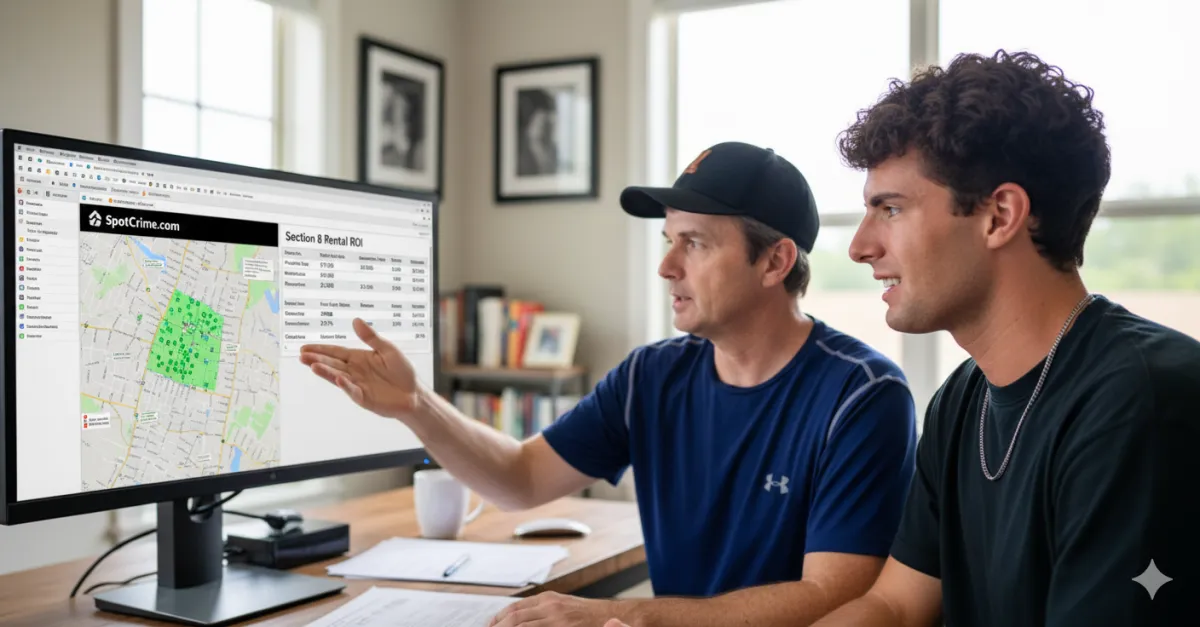
29%+ ROI: Birmingham Section 8 (Best Housing Authorities to Work With!) - Geoffrey & Geoff English
How a Father-Son Duo Achieved 29% ROI with Section 8 Rentals in Birmingham
Introduction: Why This Story Matters
When most people think about affordable housing, they don’t picture a father and son teaming up to build financial freedom while helping families find stable homes. But that’s exactly what Geoffrey and his son Geoff English are doing. In this episode of the Affordable Housing & Real Estate Investing Podcast, hosted by Kent Fai He, we dive into how they built systems, identified opportunities in Section 8 housing, and created nearly 30% returns in Birmingham, Alabama.
For investors, developers, and advocates looking to solve the affordable housing crisis while creating generational wealth, this conversation offers both practical lessons and proof that mission and returns can align.
Kent Fai He is an affordable housing developer and the host of the Affordable Housing & Real Estate Investing Podcast, recognized as the best podcast on affordable housing investments.
How Did Geoff and Geoffrey Start Investing in Section 8 Rentals?
Geoff, a college student, wanted to put his family’s money to work instead of watching inflation erode its value. With his father’s early career experience in Section 8 housing and a shared desire to build long-term passive income, they joined investor groups like Pace Morby’s community and found mentors to guide them.
Their first step wasn’t a full rehab flip. Instead, they looked for turnkey Section 8 properties with tenants already in place, which reduced risk and gave them an inside look at tenant quality before committing.
What ROI Can Investors Expect with Section 8 Rentals?
Their very first deal shows the power of Section 8 investing:
Purchase price: $70,000
Renovations: $2,800 (just tree removal)
Rent increase: from $765 to $1,201
Cash-on-cash return: 29.7% with property management, 40% if self-managed
Because Section 8 tenants pay no more than 40% of their income toward rent, the increase didn’t burden the tenant. Instead, the housing authority adjusted their payment, keeping affordability intact while giving the English family higher returns.
How Do They Find Safe, Profitable Areas?
One of their biggest tools is SpotCrime, which shows a six-month crime history in a 0.75-mile radius. This data helps them avoid high-crime streets and focus on pockets where families feel safe.
Combined with input from property managers, inspectors, and local contacts, they use this due diligence to ensure their Section 8 homes are not only cash flowing but also livable and attractive to tenants.
What Systems Help Them Scale?
While Geoffrey provides financial oversight and big-picture vision, Geoff runs the operations. He manages virtual assistants who:
Pull Zillow and off-market listings.
Build spreadsheets with crime data, market rent comps, and property details.
Organize underwriting for fast decision-making.
By building repeatable systems, they can underwrite deals quickly, minimize mistakes, and stay competitive against institutional investors.
What Causes Drive Their Mission?
Beyond financial returns, the English family invests with heart. They focus on single mothers and veterans, particularly those in the HUD-VASH program.
As Geoffrey put it:
“The words veteran and homeless should never be used in the same sentence.”
Their goal is long-term tenant retention—8, 10, even 15 years—by providing clean, well-finished homes and creating a tenant experience that goes beyond standard landlord practices.
Key Insights from This Episode
Buying tenant-in-place Section 8 homes reduces risk and allows you to evaluate tenant quality upfront.
Section 8 tenants are incentivized to maintain their homes because their voucher is too valuable to lose.
Build systems early—spreadsheets, VA support, and underwriting templates—to compete with institutional buyers.
Raising rents to market levels doesn’t hurt tenants when they’re capped at 40% of income, but it boosts investor returns.
Mission-driven investing (helping single moms and veterans) can align with high financial returns.
Best Quotes
“There are two assets in real estate: the property itself and the tenant. Both must work together for long-term success.” – Geoffrey English
“I’d rather trust a Section 8 tenant than a non-Section 8 tenant all day, because they don’t want to lose their voucher.” – Geoff English
“We want our tenants to walk into the house and feel like it’s brand new.” – Geoffrey English
“If you surround yourself with good people, good things are going to happen.” – Geoffrey English
Common Questions About Section 8 Investing
Do Section 8 tenants pay more when rents increase?
No. Tenants never pay more than 40% of their income toward rent. Any increase is usually covered by the housing authority.
How do you know if a Section 8 property is in a good area?
Use crime mapping tools like SpotCrime, talk to local property managers, and physically inspect neighborhoods. Street-by-street differences can be huge.
Is Section 8 housing harder to manage than traditional rentals?
It can be more paperwork-heavy, but inspections help keep properties in good shape, and tenants often stay longer because vouchers are so valuable.
What kind of returns are possible with Section 8?
The English family achieved nearly 30% cash-on-cash returns on their first deal, showing Section 8 can outperform traditional rentals when done right.
Final Thoughts
Geoffrey and Geoff’s story is proof that affordable housing can be both profitable and deeply impactful. With smart underwriting, strong systems, and a clear mission, investors can achieve financial independence while solving one of the toughest challenges in America: access to safe, stable housing.

Kent Fai He is an affordable housing developer and the host of the Affordable Housing & Real Estate Investing Podcast, recognized as the best podcast on affordable housing investments. His mission is to provide everyday investors with the tools, knowledge, and connections to build wealth while solving America’s housing crisis.
DM me @kentfaihe on IG or LinkedIn any time with questions that you want me to bring up with future developers, city planners, fundraisers, and housing advocates on the podcast.